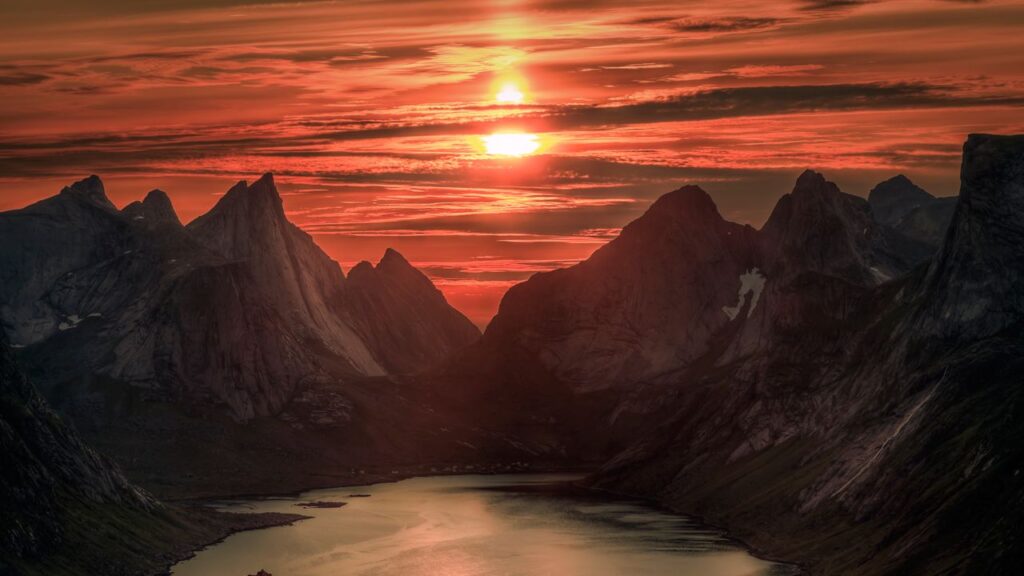The sun can be a erratic companion in high latitudes. In summer, it lingers well past midnight, bathing mountains and coastlines in a constant glow. Then, in winter, the sun disappears completely from the horizon, leaving only a faint, blue light in midday. Polar day and night are a result of Earth’s axial rotation. Above the Arctic Circle and below the Antarctic Circle, the planet tips far enough for the sun to stay in view—or out of sight—for months at a stretch. It’s as familiar to locals as the seasons. Visitors can find it disorienting, thrilling, and strangely liberating. In these corners, the sun never really rises or sets.
The original version of this article was published in Condé Nast Traveller Middle East.
Juan Maria Coy Vergara/Getty
1. Tromsø, Norway
Some 350 kilometers (about 217 miles) north of the Arctic Circle, Tromsø spends its summer wrapped in the soft gold of the midnight sun from late May to late July. Even at two in morning, the light rests low over the horizon and flattens shadows. Locals can be seen hiking up Mount Storsteinen well after dinner time or paddling kayaks in fjords which are so still that they reflect the sky. As the polar evening arrives in late-November, the daylight fades into a pale blue glow and the aurora borealis weaves green ribbons over the skies. Candlelit cafes, winter concerts and illuminated storefronts break up the darkness.
Anna Henly/Getty
2. Svalbard, Norway
Svalbard, located half-way between Norway mainland and the North Pole is home to some of the most extreme seasons. Between mid-April and late August, the sun moves in a slow, hypnotic, loop above, painting the glaciers in different shades of white, gold, and brown. Both residents and visitors adjust their clocks according to the time of day, rather than the actual hour. They then head out on boat excursions to see walruses and polar bears even though it is technically midnight. Darkness is the only thing that exists from late October until mid-February. The stars are a celestial spectacle, and snowflakes reflect just enough light to give the mountains a ghostly appearance against the darkness.



